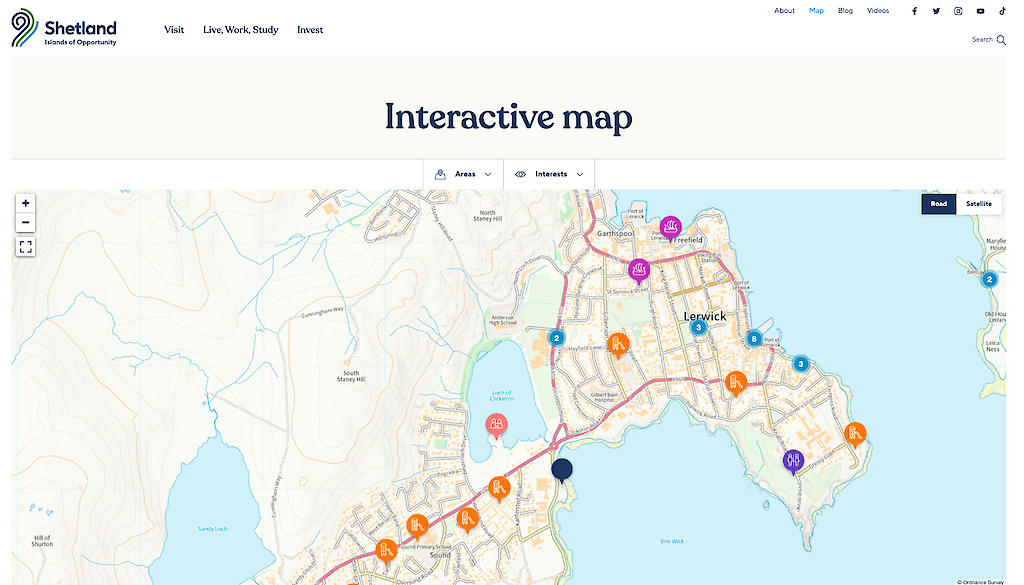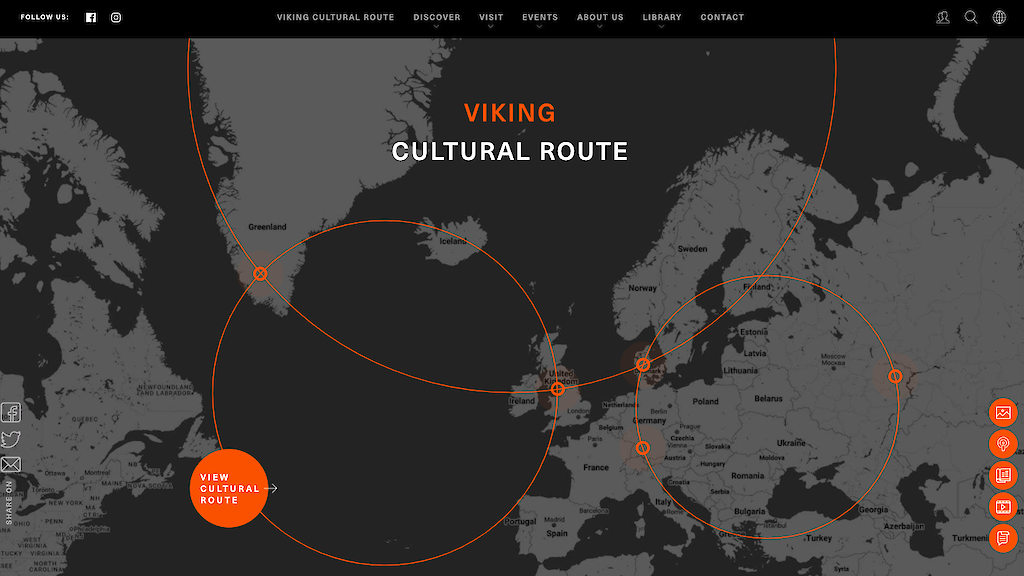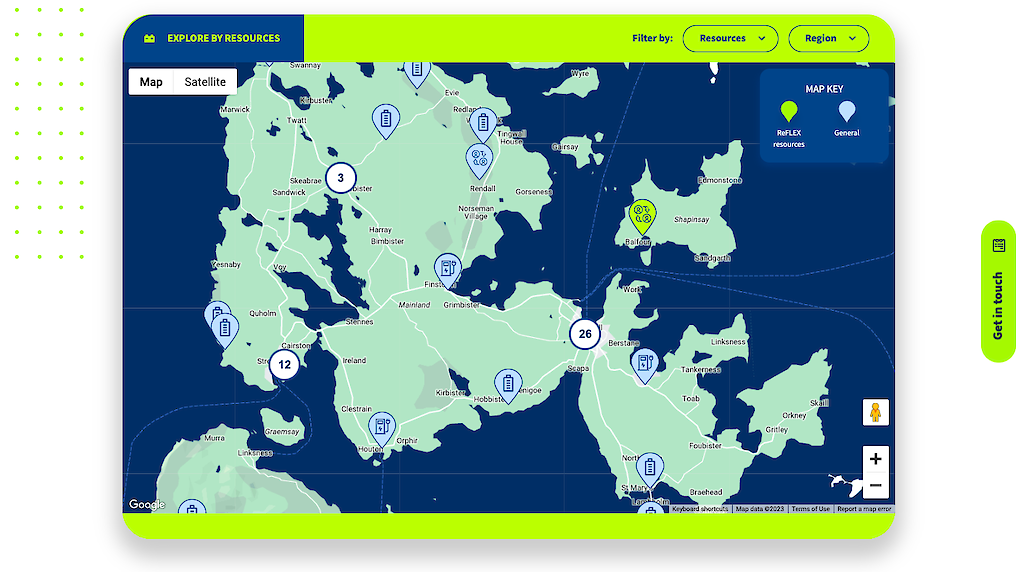Interactive maps are an increasingly important tool for businesses looking to enhance their website's user experience (UX) and improve their digital strategy. They provide a visually compelling and interactive way for users to navigate information and engage with the website, while helping improve conversion rates.
In this blog post, we explore how interactive map functionality can improve your website and benefit your business, and we provide some best practice tips for integrating interactive maps into your digital platforms.
From improving customer engagement to boosting conversion rates, interactive maps offer an attractive, flexible, and innovative way to achieve strategic digital performance targets.
The power of interactive maps in website design…
Interactive maps can greatly increase user engagement, improving UX and – ultimately – boosting business performance by helpling visitors search for specific locations and find information easily and quickly.
With any web design and development project there is a lot to consider to ensure the end result is an optimised and easy-to-use site that achieves meaningful results. Adding an interactive map to your site can help deliver this. As well as providing functionality, they add visual appeal, making your website more engaging.
This is especially important for travel and destination marketing organisations, estate agencies, port authorities, as well as international organisations operating in several locations.
Adding value to your digital strategy…
Interactive maps look great and improve user experience, but they also provide numerous benefits to enhance your digital strategy and take your website to the next level by increasing average visit duration and pages visited, while reducing bounce rates.
Here are some ways interactive maps can improve your digital strategy:
- Individualise user experiences
Interactive maps can help businesses provide a bespoke experience to their customers setting them apart from competitors. Using an innovative and intuitive tool helps improve digital outcomes and increase online performance. Interactive maps are visually appealing and user-friendly, allowing customers to search for specific locations and find information easily, helping improve their overall experience.
- Improve conversion rates
It’s not just about making your site visually appealing, interactive maps can make it easier for customers to find what they are looking for. Having more satisfied visitors helps create higher engagement and more conversions including generating enquiries, prompting bookings and encouraging visitors to download assets – helping achieve strategic objectives.
Integrating interactive maps into your website
Interactive maps are a powerful tool that businesses can use to engage users and create a more immersive digital experience. If you are interested in integrating digital maps into your website, NB Communication can help you:
- Select a mapping platform
There are many different mapping platforms available, each with its own strengths and weaknesses. We can help analyse your goals and digital strategy when selecting a platform. Some popular options include Google Maps; Mapme; Shorthand; Mapbox; Leaflet; OpenLayers.
- Define the scope of your interactive maps
To ensure the inclusion of an interactive map on your website helps improve performance, it is vital to define the scope, functionality and data sources selected, and identify how it can benefit your business.
Customising functionality should be specific to your business or industry, adding value for customers. For example, an estate agency website should show the location of available properties, and a destination marketing organisation will pinpoint areas of interest and activities.
NB’s team will consider what information your users are looking for and build any maps around their needs, while helping meet your goals.
- What do your site users need to find?
- What information do they need about these locations?
- What features and functionality will help them find what they are searching for?
- How does this benefit your business?
Align map designs with your brand identity and personality…
Every aspect of a successful website must look like it belongs to your brand, and interactive maps are no different.
They should be easy to use, with intuitive controls and clear navigation. Crucially, they should fit seamlessly into your website's design and your brand’s overarching corporate identity.
NB’s experience developing and consolidating brands’ identity, creating style guides, and designing websites that reflect and enhance corporate positioning make us an ideal partner.
Interactive maps are an excellent tool to showcase your brand personality and make your website stand out from competitors. By customising interactive maps to fit your website's aesthetic and design, you can create a memorable user experience that matches your organisation's branding.
The importance of UX in interactive map design…
There are many “dos and don’ts” when designing interactive maps, but a golden rule is to keep things simple and user-friendly. Do not overload your maps with too much information or cluttered design elements as they can hamper user experience.
Your interactive maps should be easy to use and navigate to keep users engaged and ensure they stay on your website longer, as well as guiding them to pages deeper into your site. Maps should be designed to be user-friendly, with intuitive controls and clear labels so users can find what they need and easily navigate to other sections of your website for further information.
A good way to do this is to prominently place interactive maps and use clear calls to action (CTAs) to prompt users to behave how you want them to.
- Optimise for interactive maps for multiple devices
Your site visitors should be able to easily view and use your interactive maps on mobiles, tablets, laptops, and desktop devices. Ensuring maps are scalable to various screen sizes and optimised for all devices will help keep users engaged. Responsive design ensures site visitors enjoy a consistent user experience regardless of their device.
- Use Clear Labels and Icons
Use clear and concise labels to indicate locations on your maps and use simple icons to represent different elements on the maps. This will make it easy for users to find what they need.
For example, an estate agency may use icons to show whether a property is for sale or for rent; or distinguish between different kinds of properties. Implementing well-designed marker icons helps users understand location categories quicker.
If your map includes many different categories, usability can be enhanced by implementing a filtering feature to switch layers on an off – guiding users to the information they need.
- Test user experience
Testing UX is vital in ensuring that your interactive maps are usable and engaging. NB’s expertise in analysing online accessibility and optimising performance will help you get this right and ensure the best user experience.
If designed and installed properly, interactive maps can enhance UX by helping visitors easily find the information they need. They can provide clear instructions on how to get to a specific location or find a particular section of your website, helping avoid user frustration. A well-designed map can present a mass of information in an efficient and clearly understood way – especially useful for businesses that have multiple locations or offer a range of products or services.
At NB Communication, we are passionate about improving user experience to help your organisation reach its digital targets. Interactive maps help achieve this by improving user experience, increasing engagement, encouraging repeat visits and boosting conversion rates.
Mapping a route to digital success…
Interactive maps are a versatile and potentially powerful tool for enhancing user engagement while helping meet strategic digital objectives.
With proper planning and insight, digital maps offer a creative way to deliver improved user experience and drive customer conversions. Effectively handled the inclusion of an engaging map asset will also strengthen your brand’s corporate positioning and help achieve strategic digital objectives.
Interactive maps are increasingly important and are an important step towards future proofing your website, strengthening your digital presence for years to come.
• Contact NB Communication to discover more about the best route to effectively using digital interactive maps.



